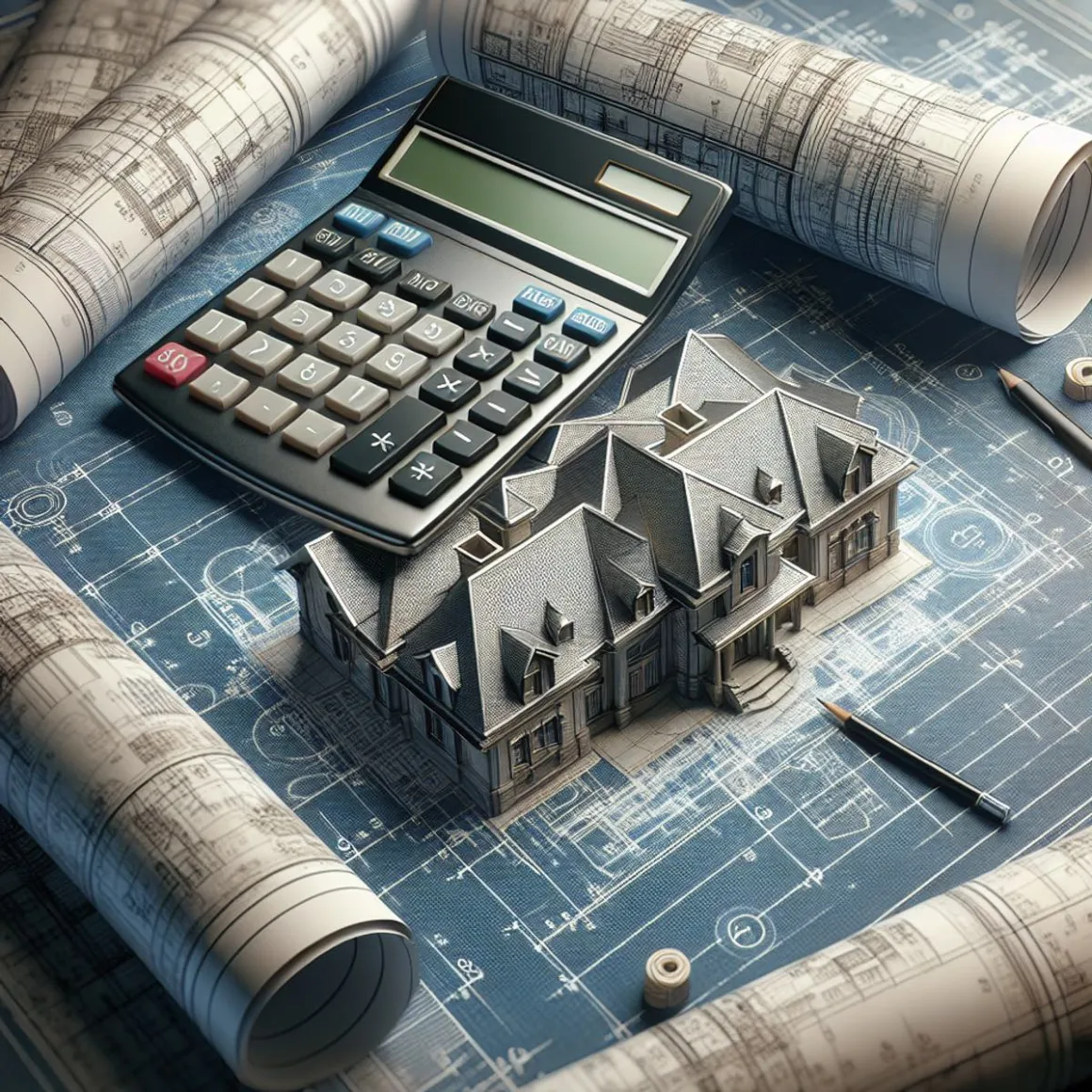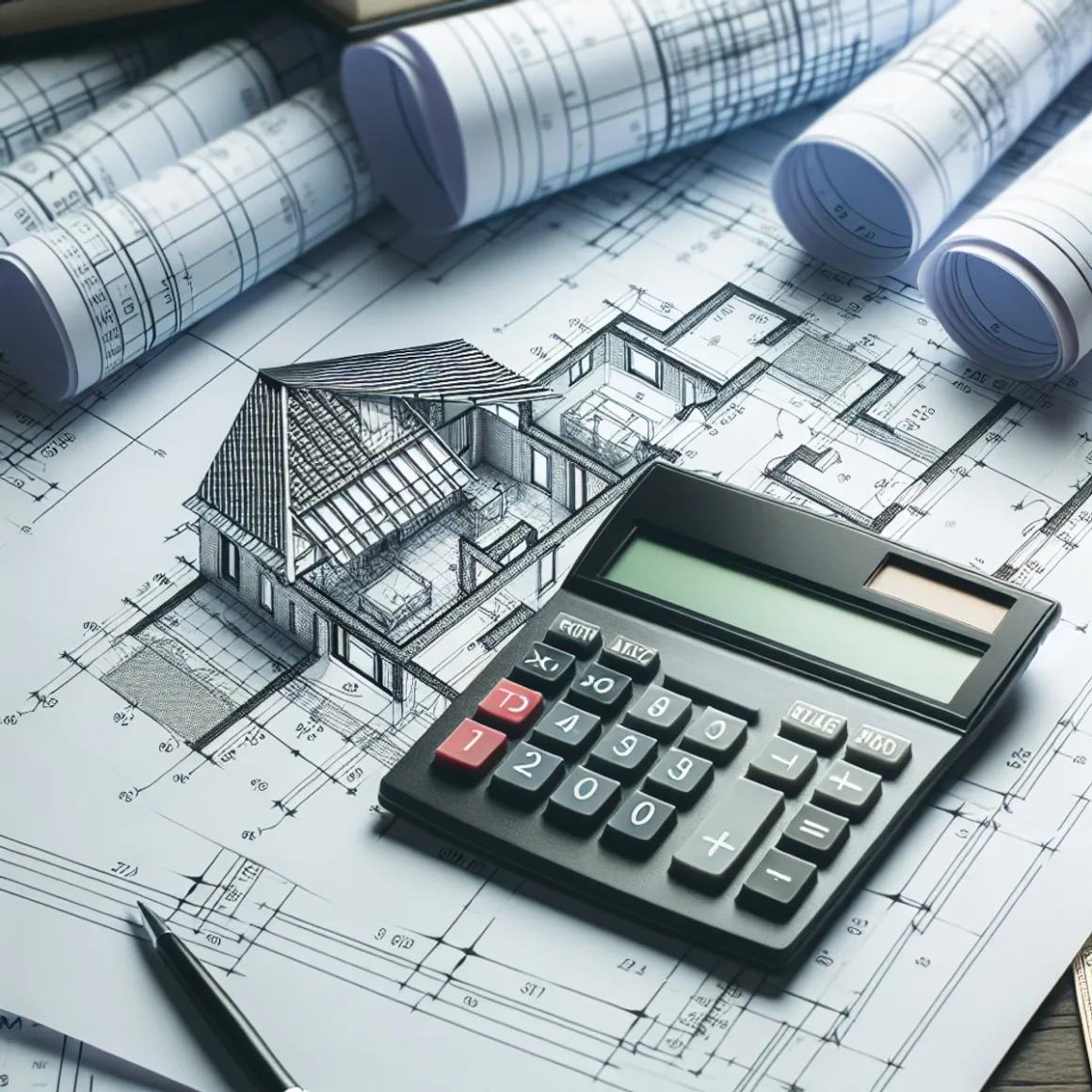Table of Contents Show
Introduction
Accurate construction estimates are the backbone of any successful construction project. They provide the financial roadmap that guides each step of the process, from planning and design to procurement and construction. However, there’s no one-size-fits-all approach when it comes to these estimates. The type of estimate required can vary greatly depending on the specifics of the project.
Some of the key considerations when selecting an estimate include:
- The project’s stage (preliminary, ongoing, or completed)
- The level of detail required
- The size and complexity of the project
- Budget constraints
For instance, a preliminary estimate might be appropriate in the early stages of a project when only high-level costs are needed. On the other hand, a detailed estimate would be more suitable for complex projects where an accurate cost breakdown is essential.
To help you navigate this crucial aspect of project planning, we’ll delve into eight different types of construction estimates. We’ll cover what they are, why they’re used, and their strengths and limitations, as well as provide examples and use cases for each.
Whether you’re embarking on a small home renovation or overseeing a multi-million dollar commercial build, choosing the right type of estimate can make all the difference.
In fact, with the advent of amazing construction tools and ingenious machines, construction processes have become more efficient and cost-effective. These advancements have further emphasized the significance of accurate estimates in optimizing resource allocation.
For example, if you’re considering a unique construction approach like a barndominium for your residential project, understanding the specific cost implications associated with it will be crucial during the estimation phase.
So let’s get started!”.

1. Preliminary Estimate
When starting a construction project, it’s important to have an idea of the potential costs involved. This is where a Preliminary Estimate comes in handy. Also known as the initial stage estimate, it provides a rough estimate of the overall project cost, giving stakeholders an early understanding of the budget requirements.
What is a Preliminary Estimate and Why is it Important?
A Preliminary Estimate is an early assessment of the expenses involved in a construction project. It’s like looking into a crystal ball – it doesn’t give you all the details, but it does give you an idea of what to expect.
This type of estimate serves two main purposes:
- Decision Making: When you’re considering different options for your project, a preliminary estimate can help you narrow down your choices based on cost.
- Communication: Whether you’re presenting to potential investors or seeking initial budget approvals, having some numbers to talk about is crucial. A preliminary estimate allows you to discuss the financial aspects of your project without getting into too much detail.
What Does a Preliminary Estimate Include?
A typical preliminary estimate includes the following components:
- Material Costs: An estimate of the cost of the materials needed.
- Labor Charges: An initial approximation of how much the workforce will cost.
- Equipment Rates: Basic costs for using machinery or heavy equipment.
- Site Management Expenses: Early predictions for managing the construction site.
Examples of How Preliminary Estimates are Used
Here are a couple of examples to illustrate how preliminary estimates can be helpful:
- Residential Complex Development: Imagine a developer who is looking at several potential plots of land for a residential complex. By preparing preliminary estimates for each option, they can compare the costs and choose the most financially viable one.
- Investor Pitches: When pitching their project to investors, a construction company may need to provide some initial cost projections. Preliminary estimates allow them to do this without going into too much detail.
The Pros and Cons of Preliminary Estimates
Like any tool, preliminary estimates have their strengths and weaknesses. Here’s a quick overview:
Advantages:
- Quick to put together, which is great for making fast decisions.
- Useful for early-stage planning and budget approvals.
Limitations:
- Not detailed enough for final budgeting.
- More prone to errors since they are based on limited information.
While preliminary estimates help get a rough idea of the costs involved, it’s important to remember that they are just the first step. As your project progresses, you’ll need to create more detailed estimates that take into account specific requirements and factors.
2. Plinth Area Estimate
When you’re crunching the numbers for a construction project, a Plinth Area Estimate might just be your best friend. This estimate is about as straightforward as it gets: think of it as the cost of the area. But not just any area—we’re talking about the big, bold outline of your building at the floor level, including those lovely thick walls.
What is a Plinth Area Estimate and Why is it Useful?
The Plinth Area Estimate is a quick method used for calculating the cost of a building based on its plinth area—which is essentially the covered built-up area measured at the floor level. It’s like taking your building, flattening it into a two-dimensional shape, and measuring that sweet footprint.
How to Calculate the Plinth Area Estimate
Time to whip out that calculator! The total estimate is found by multiplying the plinth area by the plinth area rate. And here’s how you go about it:
- Measure the external dimensions of each floor of the building.
- Multiply these dimensions to get the area of each floor.
- Add up all floor areas to find the total plinth area.
- Finally, multiply this total plinth area by a predetermined plinth area rate, which is usually based on historical data of similar projects or local standards.
Key Factors to Consider
Before you start multiplying like there’s no tomorrow, remember that various factors can sway your numbers:
- The plinth area rate can vary based on location, materials, labor costs, and even economic conditions.
- Don’t forget to include wall thickness in those external dimensions; they’re part of your building too!
- The type of structure—whether residential, commercial, or industrial—also plays a significant role in determining that crucial rate.
Advantages and Limitations
This method has its perks: it’s less time-consuming than many others and gives you a ballpark figure when you need one stat. But watch out: it might be simple, but it’s not always precise. You won’t get down-and-dirty with detailed costs like electrical fittings or doorknobs. Plus, this estimate might just miss the mark for complex structures with varying floor levels or intricate designs.
So there you have it—the lowdown on Plinth Area Estimates. Keep those rulers and calculators handy because next up is another intriguing estimation adventure: Cube Rate Estimates. Get ready to cube your way through construction costs!
3. Cube Rate Estimate
When exploring construction estimates, you’ll often come across the term Cube Rate Estimate. This estimate is distinct from the plinth area rate and serves a specific purpose.
Definition and Purpose
A Cube Rate Estimate is an estimate that calculates cost based on the cubic content of a building. It’s primarily used in the early stages of a project when detailed plans may not be available yet. Architects, builders, and clients can use this estimate to get a rough idea of the cost based on the height and overall volume of the building.
Understanding the Calculation Method
To calculate a Cube Rate Estimate, follow these steps:
- Determine the cubic content of the proposed structure by multiplying its length, breadth, and height.
- Multiply the cubic content by a predetermined rate per cubic meter. This rate is often derived from similar past projects or industry standards.
Here’s an example to illustrate the calculation:
Example: Building Dimensions – 20m x 15m x 10m = 3000 cubic meters Rate Per Cubic Meter – $200 Cube Rate Estimate = 3000 cubic meters x $200 = $600,000
It’s important to remember that this method provides only a rough estimate and doesn’t consider specific project details.
Factors Affecting Cube Rate Estimates
Several factors can influence the accuracy of a cube rate estimate:
- Type of Building: Different types of buildings (residential, commercial, industrial) have varying construction costs.
- Design Complexity: More intricate designs often result in higher costs.
- Local Construction Costs: Costs associated with construction can differ significantly depending on the location.
- Market Conditions: Factors such as inflation and resource availability can impact costs.
While Cube Rate Estimates are useful for initial cost projections, it’s crucial to supplement them with more detailed estimates as the project progresses.

4. Approximate Quantity Method Estimate
Let’s dive into the world of construction estimates and explore the Approximate Quantity Method Estimate. This technique is useful when you need a balance between detailed calculations and quick results, such as during early budget discussions or when speed is essential but precision is not critical.
What is the Approximate Quantity Method Estimate?
The Approximate Quantity Method Estimate is a way to get a rough idea of how much a construction project will cost. It’s like a versatile tool in your estimation toolbox, providing a quick and reasonably accurate cost outlook.
How Does it Work?
Here’s an overview of how you can use this method to calculate an estimate:
- Assessing wall length and other structural dimensions: Start by examining the blueprints and measuring the key dimensions of the building.
- Applying rates per running meter: Next, assign a price to each meter of construction work based on historical data and standard costs.
- Adding up these costs: Finally, sum up all the individual costs to get an estimate that gives you a general idea of the project’s cost.
When to Use It?
There are several situations where the Approximate Quantity Method Estimate comes in handy:
- Early-stage project discussions: This method provides initial numbers supporting your project vision.
- Feasibility studies: Before investing too much time and effort into detailed estimates, use this method to quickly assess if the project is financially viable.
- Quick budget checks: When stakeholders are looking for immediate cost figures, this method can help you provide some preliminary numbers.
Things to Keep in Mind
While using the Approximate Quantity Method Estimate, remember these important points:
- It’s not meant for precise cost control; an accuracy range of 10-15% is usually acceptable.
- Reliability depends on having good historical data; make sure your database is up-to-date to avoid estimation mistakes.
- Factors like material prices or labor rates can change significantly; stay informed about market trends to adjust your estimates accordingly.
With these insights in mind, you’ll be better equipped to use the Approximate Quantity Method Estimate effectively in your construction projects. Next, we’ll explore another important aspect of construction estimates—the Detailed Estimate.
5. Detailed Estimate
Detailed Estimate: The term itself suggests the meticulousness involved in this type of construction estimate. When every brick, beam, and bolt counts, a detailed estimate makes its grand entrance. It’s an exhaustive and comprehensive estimation method that breaks down every aspect of the construction project into individual cost components.
Nitty Gritty of a Detailed Estimate
- Labour Costs: How many workers do you need? For how long? What are their wages?
- Material Costs: From cement to ceiling fans, it covers all the raw materials required.
- Equipment Costs: Need a crane or bulldozer? It’s included.
Why Detailed Estimate Matters
The essence of a detailed estimate lies in its measured quantities. Each separate item cost is calculated based on accurate measurements rather than rough approximations. This precision leads to an accurate financial blueprint for your construction project, reducing the risk of unforeseen expenditures down the line.
Creating a Comprehensive Detailed Estimate
Creating a detailed estimate is akin to assembling an intricate jigsaw puzzle — each piece matters. Here are some steps to create one:
- Take Accurate Measurements: Precision is key. Measure twice, and cut once.
- Itemize Materials and Labour: Break down every cost component.
- Estimate Costs: Research market prices for labour and materials.
- Add Contingency: Include a buffer for unexpected costs.
- Validate Your Numbers: Cross-check your estimates with industry standards or consult a professional.
While it may seem time-consuming and labor-intensive, it’s worth noting that investing time in a detailed estimate can save significant financial resources later on by preventing cost overruns and project delays.
A detailed estimate isn’t always necessary for every project — but for larger, more complex projects where precision is paramount, it’s often the go-to choice.
6. Revised Estimate
In the world of construction projects, Revised Estimates are an essential tool. They come into play when the cost of a project is projected to exceed the original sanctioned estimate by 5% or more.
What is a Revised Estimate?
A Revised Estimate is an updated version of the initial budget for a project, altered to accommodate changes in scope, materials, labor, or unforeseen circumstances that could impact overall costs. The purpose of creating a revised estimate is to give stakeholders an accurate picture of the new expected cost, helping them plan and allocate resources effectively.
Why do we prepare a Revised Estimate?
Here are some reasons why we are preparing a revised estimate:
- Cost Overruns: Projects rarely go exactly as planned. Whether due to unexpected site conditions, design modifications, or increases in material prices, costs can quickly overrun initial estimates.
- Change in Scope: Sometimes, the scope of a project may expand or contract. This could be due to client requests, regulatory requirements, or other factors that necessitate significant changes to the project.
- Time Delays: Construction projects operate on tight schedules. Delays can lead to increased labor costs and other expenses which need to be factored into the revised estimate.
It’s important to note that while revised estimates can act as life-savers when facing unforeseen changes, they should not be used as a substitute for thorough initial planning. A well-planned initial estimate goes a long way in keeping cost overruns and revisions to a minimum.
7. Supplementary Estimate
During a construction project, it’s not uncommon for unexpected things to come up. That’s where the Supplementary Estimate comes in handy. It’s an important tool that allows for additional work that wasn’t part of the original agreement. Whether it’s due to design changes or unforeseen circumstances, these estimates help ensure that projects can adapt without any financial issues.
Understanding the Need for Supplementary Estimates in Construction Projects
There are several reasons why a supplementary estimate may be needed:
- Unplanned Changes: Sometimes, a client may decide they want to add new features or improve existing ones that weren’t included in the initial plans.
- Regulatory Requirements: New building codes or regulations may require changes that need extra funding.
- Market Fluctuations: Significant changes in material costs or labor rates can affect project expenses.
Process of Creating a Supplementary Estimate
Here’s how a supplementary estimate is typically created:
- Identification: Recognize the need for additional work that goes beyond what was originally planned.
- Documentation: Write down detailed descriptions of the extra work that needs to be done.
- Quantification: Figure out how much of each material, labor, and equipment will be needed for these additions.
- Costing: Determine the exact costs of these quantities based on current prices, taking into account any potential increases.
- Approval: Present the supplementary estimate to everyone involved for approval before starting any extra work.
By understanding when and why a supplementary estimate is necessary, and by following a structured process for creating one, everyone can make sure that construction projects stay on track even when unexpected changes happen. This flexibility in budgeting protects both the financial interests of those involved and the timely completion of construction projects.
As we go through different types of construction estimates, it’s important to remember that each one has its purpose in dealing with the various stages and challenges of a project.
8. Annual Repair Estimate
When buildings age, they whisper (or sometimes shout) for attention, and an Annual Repair Estimate is your strategic plan to keep those whispers from becoming roars. This estimate isn’t about building something new but about maintaining the vitality of what already exists. Think of it as a wellness check-up for your building.
Definition and Purpose
The Annual Repair Estimate is the financial crystal ball that helps foresee and budget for the building upkeep needed to prevent deterioration. It’s a proactive measure designed to:
- Extend the lifespan of the construction
- Preserve property value
- Ensure safety and comfort for occupants
Key Components of an Annual Repair Estimate
Breaking down an Annual Repair Estimate is like dissecting a frog in biology class — it’s all about understanding what’s inside:
- Inspection Costs: The fees for experts who inspect and diagnose your building’s health.
- Material Costs: From paint to plumbing fixtures, these are your bricks-and-mortar essentials.
- Labor Costs: The price tag for skilled professionals who’ll wield the tools and tackle the tasks.
- Contingency Funds: A savvy saver’s nest egg for unexpected repairs.
Each component is critical, ensuring that every aspect of maintenance is accounted for, leaving no stone unturned or shingle unchecked.
Importance of Budgeting for Maintenance Costs
Budgeting for maintenance costs isn’t just good practice; it’s essential for fiscal fitness in the construction game. Without it, minor issues can snowball into major expenses, faster than you can say “leaky faucet.” Regular maintenance keeps these costs predictable and manageable.
By setting aside funds annually, you’re not just preparing for the inevitable wear and tear; you’re also investing in peace of mind. Knowing that resources are allocated for upkeep lets you sleep better at night, even during the stormiest weather.

Conclusion
Embarking on a construction venture without a sturdy compass—namely, accurate construction estimates—is like sailing without a map. The right type of estimate not only guides you through the turbulent financial seas but also ensures you dock at the project’s completion on budget and on time. Here are some nuggets of wisdom to help you pick the most suitable construction estimate for your project:
- Align with Project Phase: Match the estimate to your current project stage. Early on? A Preliminary Estimate might suffice. Nearing the final design? Consider a Detailed Estimate.
- Scope and Specificity: Gauge the level of detail you need. A Cube Rate Estimate could be ideal for early budgeting, while an Approximate Quantity Method Estimate may provide clarity as designs progress.
- Budget Constraints: When financial flexibility is limited, ensure your estimate provides a tight cost range to avoid overruns.
- Change Anticipation: If changes are expected during execution, stay prepared with a strategy for Revised or Supplementary Estimates.
- Maintenance Mindfulness: Don’t forget about the post-construction phase. Annual Repair Estimates are crucial for long-term budgeting.
Remember, choosing the right type of estimate is less about finding a one-size-fits-all solution and more about tailoring to your project’s unique blueprint. By considering these factors, you’re equipping yourself with the foresight to navigate through your project’s financial landscape with confidence.
Citation
- M, Jannon. ‘Different Types of Construction Estimates | Buildxact US.’ Buildxact US. Last modified March 10, 2023. Published June 14, 2022. Accessed March 10, 2024. https://www.buildxact.com/us/blog/types-of-construction-estimates/.
- RIB Software. “Understanding The Types of Cost Estimates In Construction.” Last modified February 16, 2024. Accessed March 10, 2024. https://www.rib-software.com/en/blogs/construction-cost-estimates-types.
- Bauwise Construction Management Software. ‘Understanding the 5 Types of Construction Project Costs.’ Last modified March 11, 2024. Accessed March 11, 2024. https://www.bauwise.com/understanding-the-5-types-of-construction-project-costs/.
- Procore. “The 5 Key Types of Construction Contracts | Procore.” Last modified December 18, 2023. Accessed March 11, 2024. https://www.procore.com/library/construction-contract-types.
FAQs (Frequently Asked Questions)
A preliminary estimate is an initial stage estimate that provides an approximate project cost. It helps in the early planning and budgeting of construction projects.
The plinth area estimate is based on the external dimensions and floor level of a building, and it uses the plinth area rate to calculate the cost. It is used to estimate the total built-up area of a building.
A cube rate estimate takes into account the plinth area rate and the building height to calculate the cost. It provides an understanding of the cost based on volume rather than just the floor area.
The approximate quantity method estimate considers the wall length and rate per running meter to determine the project cost. It provides an overview of the cost based on measured quantities.
A detailed estimate involves measured quantities and separate item costs to create a comprehensive project cost assessment. It provides a more accurate breakdown of costs for different components of a construction project.
A revised estimate is prepared when there is a 5% or more exceedance from the original sanctioned estimate in construction projects. It revises the project cost based on updated factors and considerations.
Supplementary estimates are required to account for additional work during progress in construction projects. They help in managing unforeseen expenses and changes during a project.
An annual repair estimate focuses on building upkeep and maintenance costs, providing an understanding of the budget required for ongoing maintenance and repair activities for a building.










